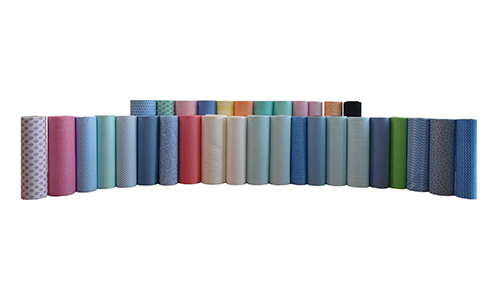In modern industry and everyday life, nonwoven materials are gradually becoming the basic raw material for a wide range of products thanks to their unique properties. As an environmentally friendly, durable material with a wide range of applications, nonwovens are widely used in the fields of medical care, packaging and household products. This article will introduce in detail the advantages of nonwoven materials, their main applications and their important role in the environmental protection industry, helping enterprises and consumers better understand the unique value of this material.
I.What are non-woven materials?
Non-woven fabric (Non-woven fabric) is a material made of fibres that are interwoven and woven through mechanical, chemical and thermal bonding. Unlike traditional textiles, non-woven fabrics do not weave yarns through a textile process, but rather combine the fibres directly. Nonwoven materials can present different physical properties and use functions according to different needs by changing the types of fibres, weaving methods and post-treatment processes.
II.Advantages of nonwoven materials
Nonwoven materials have significant advantages in several aspects, mainly reflected in the following aspects:
Environmental friendliness
The production process of nonwoven fabrics is simple, and many nonwoven materials are made of biodegradable and renewable natural fibres, which are more environmentally friendly. Compared with traditional plastic products, nonwoven fabrics can reduce environmental pollution, especially biodegradable nonwoven fabrics, which can reduce the burden on soil and water, and is an ideal material for the environmental protection industry.
Strength and durability
Nonwoven fabric has good tensile strength and abrasion resistance, making it perform well in many application scenarios. It can withstand high mechanical pressure and does not break easily even in wet environments, making it widely used in the medical, cleaning and packaging industries.
Permeability and water absorption
Nonwoven fabric has good breathability and water absorption, which can effectively regulate moisture and keep it dry. This feature makes nonwoven fabrics widely used in the production of wet wipes, disposable sanitary products and other products.
Low Cost and Versatility
The production process of nonwoven fabrics is flexible and efficient, enabling mass production. Therefore, the cost of nonwoven materials is relatively low and can meet the production needs of most enterprises. In addition, by changing the composition and process of nonwoven fabrics, it can have many different functions, such as waterproof, oil-proof, anti-bacteria, etc., to meet the needs of different fields.
III.Main applications of nonwoven materials
The application fields of nonwoven materials are very wide, covering all walks of life, and the following are several major application fields:
Medical industry
Nonwoven materials are particularly widely used in the medical industry. It is widely used in the production of disposable masks, surgical gowns, dressings and other medical supplies. Nonwoven fabrics have good air permeability and antibacterial properties, which can effectively avoid bacterial infections and ensure patient comfort at the same time.
Hygiene products
The application of nonwoven fabrics in sanitary products is also very common, especially in products such as baby nappies, sanitary napkins and wet wipes as raw materials, which ensure the comfort of the products and also meet the requirements of breathability and water absorption.
Packaging Industry
With the enhancement of environmental awareness, many packaging companies have begun to use non-woven fabrics to replace traditional plastic bags and paper bags. Nonwoven bags are not only environmentally friendly, but also strong and durable, with high market demand.
Household goods
Nonwoven materials are also widely used in household goods. For example, furniture covers, storage bags, curtains, etc., can be made of non-woven materials, which are not only environmentally friendly, but also have good breathability and comfort.
IV.Environmental protection of non-woven materials
With the growing global concern for environmental protection, the environmental advantages of non-woven materials are gradually highlighted. Compared with traditional plastic products, nonwoven materials have a lower environmental burden. Especially biodegradable nonwoven fabrics, which can decompose quickly in the natural environment, reducing the long-term pollution of plastic waste to the environment.
In addition, the recyclability of nonwoven materials is one of their environmental advantages. After proper recycling treatment, nonwoven fabrics can be reused again to enter a new production cycle, minimising the waste of resources.
V.Future development trend of nonwoven materials
With the continuous development of technology and environmental awareness, nonwoven materials will play an important role in more fields in the future. Especially under the impetus of environmental protection industry, the production process of nonwoven fabrics will be more refined and the product functions will be more diversified. For example, the research and development of intelligent nonwoven materials will make it possible to realise more innovative applications, such as antibacterial, antiviral and other new functions.
VI.Conclusion
Nonwoven materials with its environmental protection, durability, low cost and other characteristics, in a number of industries have been widely used, and with the in-depth development of the concept of environmental protection, its market demand will continue to grow. Both enterprises and consumers should pay attention to the source, environmental performance and usage effect when choosing nonwoven products. Nonwoven fabrics, as a kind of environmental protection material with great potential in the future, is gradually becoming an important force to promote green development.

